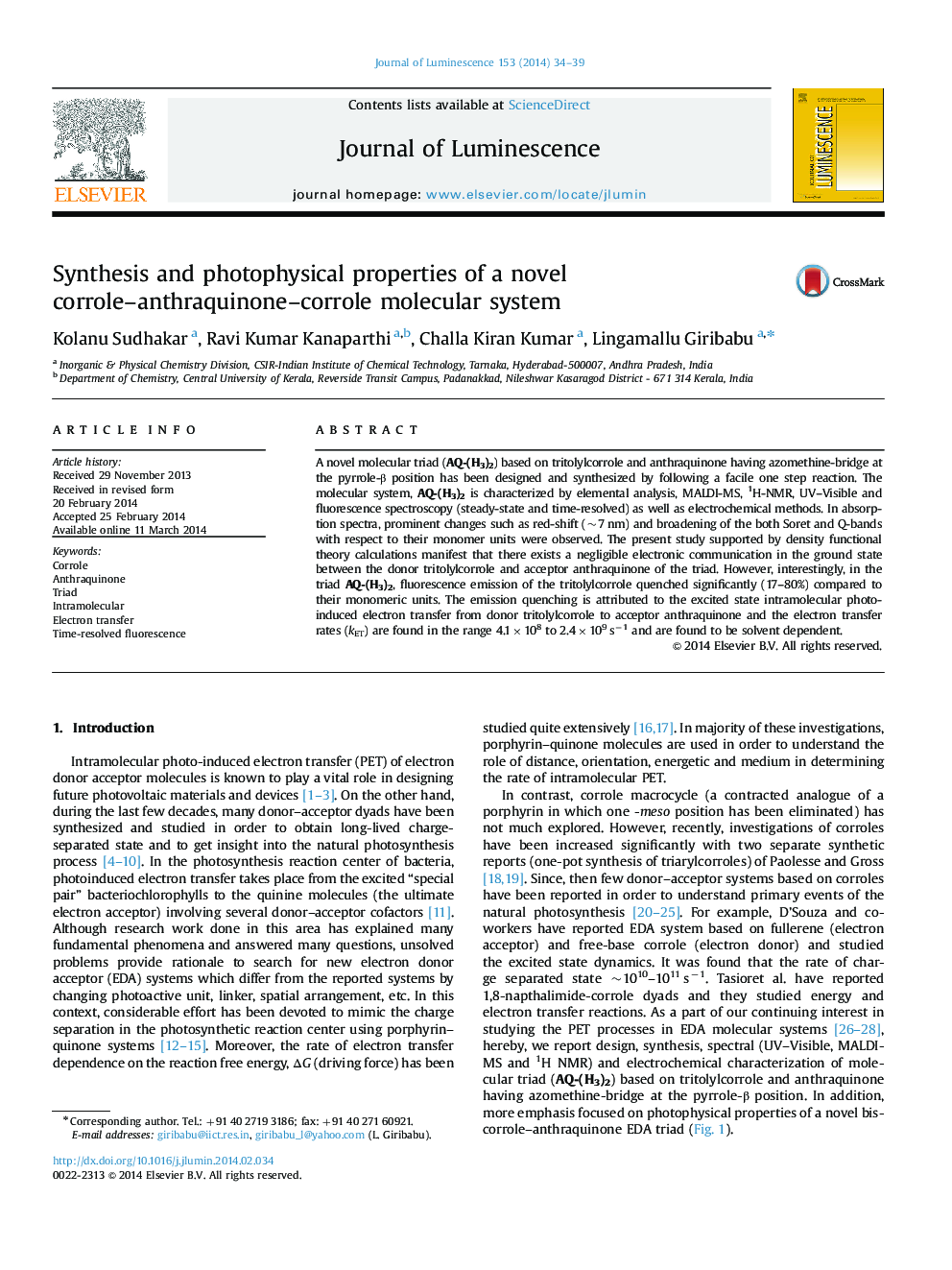| Article ID | Journal | Published Year | Pages | File Type |
|---|---|---|---|---|
| 5399658 | Journal of Luminescence | 2014 | 6 Pages |
Abstract
A novel molecular triad (AQ-(H3)2) based on tritolylcorrole and anthraquinone having azomethine-bridge at the pyrrole-β position has been designed and synthesized by following a facile one step reaction. The molecular system, AQ-(H3)2 is characterized by elemental analysis, MALDI-MS, 1H-NMR, UV-Visible and fluorescence spectroscopy (steady-state and time-resolved) as well as electrochemical methods. In absorption spectra, prominent changes such as red-shift (~7 nm) and broadening of the both Soret and Q-bands with respect to their monomer units were observed. The present study supported by density functional theory calculations manifest that there exists a negligible electronic communication in the ground state between the donor tritolylcorrole and acceptor anthraquinone of the triad. However, interestingly, in the triad AQ-(H3)2, fluorescence emission of the tritolylcorrole quenched significantly (17-80%) compared to their monomeric units. The emission quenching is attributed to the excited state intramolecular photoinduced electron transfer from donor tritolylcorrole to acceptor anthraquinone and the electron transfer rates (kET) are found in the range 4.1Ã108 to 2.4Ã109 sâ1 and are found to be solvent dependent.
Related Topics
Physical Sciences and Engineering
Chemistry
Physical and Theoretical Chemistry
Authors
Kolanu Sudhakar, Ravi Kumar Kanaparthi, Challa Kiran Kumar, Lingamallu Giribabu,
